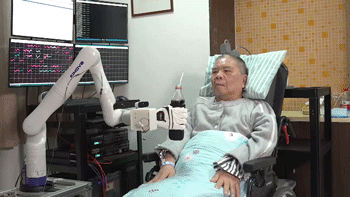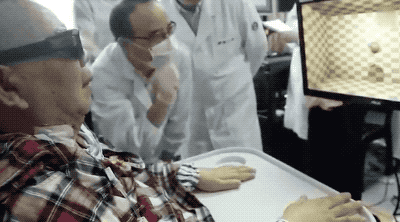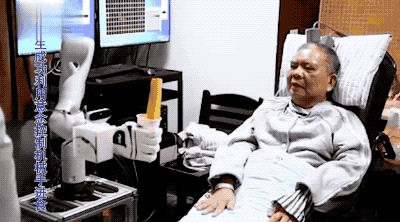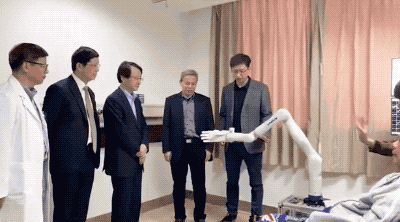Using the brain to manipulate the machine, a plot that is most common in science fiction movies, has begun to come into reality. Researchers at the Second Hospital of Zhejiang University successfully helped a high paraplegic patient to achieve science fiction operations such as drinking cola with thoughts.

▲ Picture from: Zhejiang University Second Hospital
This is the latest research result of the brain computer program of Zhejiang University and its Second Affiliated Hospital. The volunteer volunteer Mr. Zhang, a 72-year-old retired teacher, suffered severe cervical spinal cord injury two years ago. The brain is functional but the limbs are completely paralyzed.
Researchers implanted Utah array electrodes into Mr. Zhang ’s motor cortex, which controls the movements of the right upper limb, so that he could control a three-dimensional movement of the robotic arm to complete a series of actions such as eating, drinking, and shaking hands. This is the first case.
Innovative technology was also applied in the process of implanting electrodes into the brain. The researchers this time accurately implanted two microelectrodes into the neurons of the motor cortex of the brain with the help of a surgical robot with a step of 0.1 mm. 5th floor.
However, the effect of the surgery is not immediate. The action of drinking Coke seems simple, but from the completion of the operation in August last year to the time when he can “talk” with the robotic arm, Mr. Zhang has been training for a long time and has been in the computer from the beginning. Control the mouse on the screen, and control the three-dimensional movement of the robotic arm in the later stage, the difficulty gradually increases, and then there is a scene of drinking cola with intentions.

From the video released by the Second Academy of Zhejiang University, in addition to drinking Cola, Mr. Zhang has been able to control the robotic arm to achieve handshake, churros and other actions, and even use the robotic arm to operate the mouse to play Mahjong on the computer.


Brain-computer interface, referred to as BCI, refers to the establishment of a direct connection path between the human or animal brain and external equipment. The principle is to process electrical signals from the brain into signals that can be recognized by a computer through a signal acquisition device. Converted into specific instructions. BCI has one-way and two-way interfaces. The former means that the computer can only receive or send signals to the brain, and the latter allows two-way information exchange between the brain and the computer. (Wikipedia)
In the case of the Second Hospital of Zhejiang University, the area of the microelectrode array implanted in the patient was only 4However, the public’s understanding of this term probably originated from Musk’s Neuralink Company. Last year, Musk announced that it had achieved a breakthrough in brain-computer interface technology, hoping to apply it to human patients by the end of 2020. In the future, it can also make people and super Artificial intelligence communication, in Musk’s words, “We can choose to integrate with AI.”

▲ Picture from: Telegraph Star
Furthermore, the technology company that sees the development of brain-computer interface is also Facebook. Its brain-computer interface is mainly focused on idea typing. Last year, its project director said that their machineIt is already possible to read some of the testers’ ideas through brain waves.
Although the brain-computer interface technology is far from mature, the realization of the idea of drinking cola is enough to make us have more expectations for the technology to benefit humanity in the future.
Image from: Nature